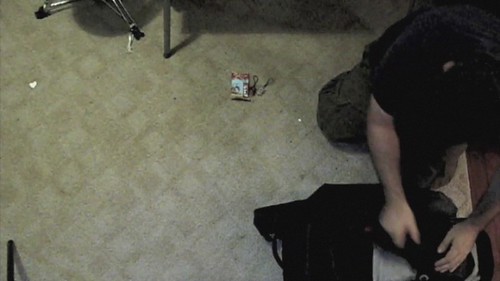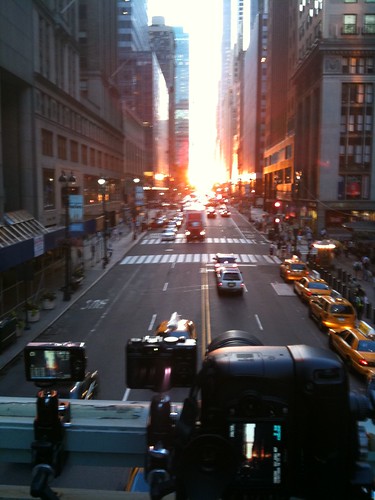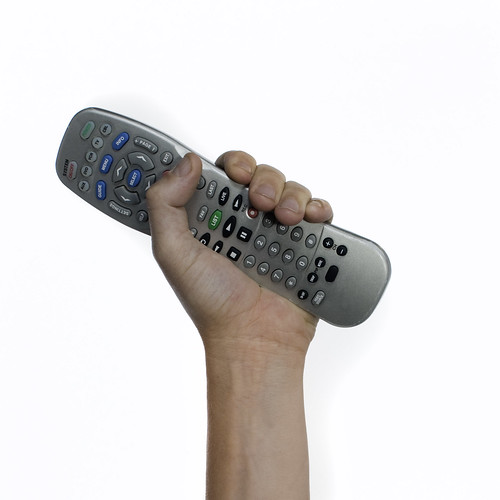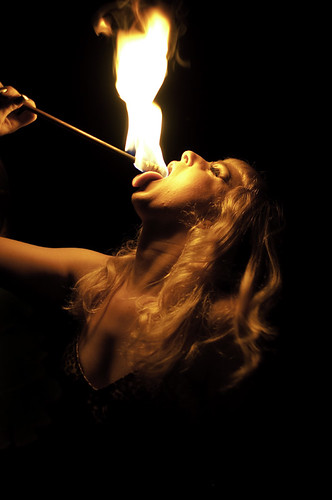I apologize for blogging about this so late, but hey - I've been keeping busy, and busy is good, right?
Right.
So a few weeks ago, an event called "Manhattanhenge" took place in New York City. This event happens twice a year in the summertime, where the setting sun hits the horizon in near-perfect alignment with the city grid of Manhattan. Stand on just about any east/west street, and you'll see the sun line right up in between the buildings and skyscrapers. It's pretty neat.
You can find a lot more info about it
here.
Having done a little bit of research, I discovered a few things. There is a pretty decent following of this event, and lots of people like to come out and photograph it. Many of the posted photos I found listed where in the city they were shot from, so I made some mental notes about potential shoot-sites for myself. I had also noticed that no one seemed to post a decent-looking timelapse of the event. I'm sure it's been done, but I couldn't find any. So I decided to take a crack at it for myself.
I headed over to what seemed like the easiest,
most convenient spot - the bridge that crosses over 42nd street, just above 1st ave.
Unfortunately, I wasn't the only one with this idea. By the time I had arrived (about 7:45 or so), there was already a large crowd of people huddled up against the railing of the bridge, taking up the whole sidewalk. A forest of tripods made it clear that there was no way I was going to be able to get my shot from this spot.
After glancing down 42nd street, I could make out what looked to be another bridge, about 3 or 4 avenues over. I hopped on my bike and headed in that direction to investigate.
Sure enough, there was an
overpass, right in front of Grand Central Station. This looked like a perfect spot. Nobody was up there, so I maneuvered around until I could find my way up. That's when I figured out why no one was up there - there were signs at at the on-ramp onto the bridge stating "no pedestrian traffic".
I reasoned that since I was on my bike, I really couldn't be classified as a pedestrian. So I pedaled up to the spot, where I found a very narrow sidewalk. I stashed my bike, and set up my two Canons - the SD630, shooting as fast as it could (about 1 frame every 2-3 seconds), and the G7, shooting a -2, 0, +2 bracket sequence as fast as it could (also about 2-3 seconds) - using the wonderful
CHDK intervalometer I've become so dependent on.
I used a super clamp and a little ball head to secure the cameras to the railing, and - fearing interference from the police - I decided to step away from the railing and wait until the last moment before the sunset (which only lasts about 3 or 4 minutes) to grab some stills with my other cameras.
Everything was going smoothly, but sure enough, as the sunset crept closer, people started to walk up to my spot, and set up their tripods and get ready for their shots. After about three of four of them showed up, I decided that I'd better get over there, so as to secure my own spot, and to make sure nothing happened to my TL cams.
By the time the event had finally come around, I'd say there were a good dozen or so fellow law-breakers up there with me, and we were all shooting away. I snapped a few frames with the F3 on Velvia, and wound up setting up another super clamp with a magic arm to help me stabilize my D90 with the 80-200, which I was shooting bracketed frames with as well.
Here's a quick iPhone grab of what my view was:
The best-looking shot I was able to get with the D90 looks like this:
Not bad, but not great, either. Shooting the sun is harder than I expected.
As the last of the sun disappeared into the horizon, as if on cue, one of New York City's finest came along to break up our little party. He asked if any of us were interested in receiving a summons, and if not, to vacate the bridge immediately. Since I had so much crap with me, I did the best I could to pack up quickly, but I did stall a little, with the hopes of at least letting the TL cams catch that last bit of sun disappearing as possible.
I was the last person to leave the bridge (first one in, last one out, heh), and fortunately, the cop didn't give me any trouble.
When I got home to compile the TL frames, I realized that my framing was a bit on the wide side, and a tighter composition (not unlike the still above) would've probably made for a better shot. I also forgot to set the cameras to under-expose, so the frames that the 630 shot were pretty much useless. I monkeyed around with some HDR and exposure blending with the frames from the G7, but due to the rapid movements of the street traffic, nothing looked right.
In the end, I decided I'd just compile the -2 set of frames, and go with that; lesson learned.
Here it is up on flickr:
I know, too wide. And the sky is completely blown out.
Anyway, there is a happy ending to this story.
For whatever reason, I decided to post my shots as soon as I'd finished them (this is not something I do very often; I tend to post bunches of stuff all at once).
I woke up the next morning to find a ton of messages in my flickr inbox, reporting new comments on my movie, and, more surprisingly, lots of new contacts (followers). It turns out that the
flickr blog decided to post about Manhattanhenge that day, and they linked to my time lapse movie (probably because it was the only one) in
their post.
I scored a all-time personal best hit count that week, landing well over 500 views over the next couple of days. Pretty cool, but I really wish the shot had come out better.
Oh well. Lessons learned for next time.












